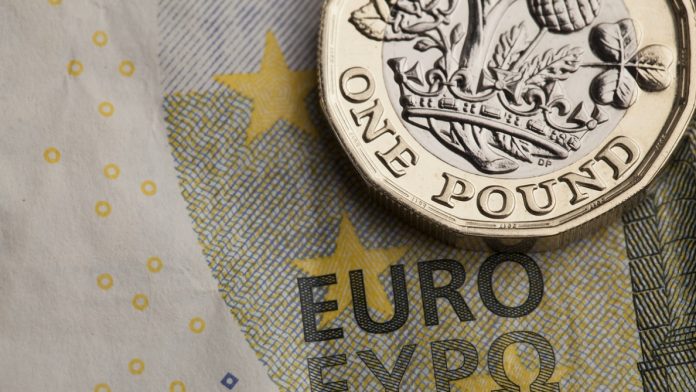British political uncertainty and better than forecast German industrial production sent the pound euro exchange rate lower on Monday, before Brexit optimism lifted the pound into the close. The pound euro exchange rate closed Monday’s session at flat at €1.1435. The pair is holding those late gains in early trade on Tuesday.
Brexit headlines acted as the exclusive driver of sterling on Monday. Initial scepticism that a Brexit deal would not be reached in time weighed on the pound on Monday. However, later in the session the pessimism was replaced by optimism that the two sides were actually closer to reaching an agreement than initially thought. The conflicting reports are leaving pound investors unsure if a deal will be ready for the EU Summit later this week.
| Why is a “soft” Brexit better for sterling than a “hard” Brexit? |
| A soft Brexit implies anything less than UK’s complete withdrawal from the EU. For example, it could mean the UK retains some form of membership to the European Union single market in exchange for some free movement of people, i.e. immigration. This is considered more positive than a “hard” Brexit, which is a full severance from the EU. The reason “soft” is considered more pound-friendly is because the economic impact would be lower. If there is less negative impact on the economy, foreign investors will continue to invest in the UK. As investment requires local currency, this increased demand for the pound then boosts its value. |
Today, Brexit headlines will continue to drive the pound. However, pound investors will also look towards UK labour market data and an appearance by Bank of England Governor Mark Carney as he testifies before Parliament.
Analysts are expecting the UK unemployment rate to remain steady at 3.8%. Meanwhile, analysts forecast that average earnings in the three months to August will hold steady at an impressive 4%. Strong figures could support the pound, although data will play second fiddle to Brexit news.
| How does strong jobs data boost the currency? |
| It works like this, when there is low unemployment and high job creation, the demand for workers increases. As demand for workers goes up, wages for those workers also go up. Which means the workers are now taking home more money to spend on cars, houses or in the shops. As a result, demand for goods and services also increase, pushing the prices of the goods and services higher. That’s also known as inflation. When inflation moves higher, central banks are more likely to raise interest rates, which then pushes the worth of the currency higher. |
Will ZEW Sentiment Figures Pull Euro Lower?
The euro moved higher versus the pound early in the previous session, after better than expected eurozone industrial data. Industrial production increased 0.4% month on month in August. This was ahead of the 0.3% increase than analysts had pencilled in. However, production was down -2.8% compared to a year earlier. This was the tenth straight month that industrial production had fallen on an annual comparative basis.
The figures will have done little to stem recession fears for the block. Following months of poor data investors have grown increasingly convinced that the eurozone is falling into recession.
The euro could become vulnerable today as investors look ahead to German ZEW sentiment data for both the eurozone and for Germany. Economic sentiment has steadily declined across recent months amid growing concerns over the manufacturing slump in Germany and fears that it could spill not only across sectors but also across the eurozone. Sentiment unexpectedly bounced higher in September. However, analysts are not expecting a repeat in October.
| What do these figures mean? |
| When measuring the value of a pair of currencies, one set equals 1 unit and the other shows the current equivalent. As the market moves, the amount will vary from minute to minute.
For example, it could be written: 1 GBP = 1.13990 EUR Here, £1 is equivalent to approximately €1.14. This specifically measures the pound’s worth against the euro. If the euro amount increases in this pairing, it’s positive for the pound . Or, if you were looking at it the other way around: 1 EUR = 0.87271 GBP In this example, €1 is equivalent to approximately £0.87. This measures the euro’s worth versus the British pound. If the sterling number gets larger, it’s good news for the euro. |





